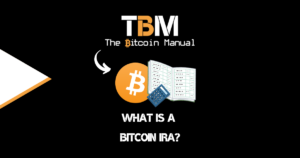Time Lock Contracts
Home » Bitcoin Finance » Time Lock Contracts
The Bitcoin scripting language may seem primitive when compared to that of other smart contract platforms, but that doesn’t mean it is completely devoid of functionality. Bitcoin applications leveraging its smart contract features may not be popular, but the functionality for them to exist is there and continues to expand.
A Time-lock is a smart contract that restricts the spending of some bitcoins until a specified future time or block height.
Time-locks feature mainly as a parameter in Bitcoin smart contracts for establishing payment channels and hashed time-lock contracts. But it can also be used to lock-up bitcoins held as an investment for a period of months or years.

Time-lock is also used to make fee sniping less profitable and for trustless precomputed fee bumping. Timelocks are one of the most practical functionalities of Bitcoin, allowing you the ability to program actions according to a series of parameters and thus making Bitcoin better than money, a fully programmable digital money.
An unused part of bitcoin
Timelocks are nothing new and were added to the original Bitcoin software by its creator, Satoshi Nakamoto. They are present in all transactions even if most do not use this function, so the default blocking time is 0x00000000 (0) or 0xFFFFFFFF (4294967295).
However, for those transactions in which timelock is used, it is important to know that it has three important attributes. What are they: location, orientation, y metrics.
What is a Point Time-Locked contract (PTLC)?
A Point Time-Locked Contract (PTLC) is a Bitcoin transaction that locks bitcoin to a point on Bitcoin’s elliptic curve. The outputs created by this transaction type are also time-locked, meaning they cannot be spent before a certain time, as denominated in UTC time or block height.
Benefits of Point Time-Locked contracts
PTLCs are similar to Hashed Time-Locked Contracts (HTLCs) but offer privacy gains as well as fee savings. For this reason, PTLCs may replace HTLCs as the driving contract behind the Lightning Network and other off-chain protocols. Point Time-Locked Contracts also became more accessible after Schnorr signatures went live on Bitcoin with the Taproot upgrade.
Extending Point Time-Locked contracts (PTLC)
Implementation of PTLCs in Bitcoin requires creating signature adaptors that will be easier to combine with digital signatures with schnorr signatures that have been implemented on Bitcoin.
The unavailability of schnorr signatures in alternative cryptocurrencies may also prevent the use of PTLCs in some cross-chain contracts, though it is still technically possible to use PTLCs with just ECDSA pubkeys and signatures.
Share with a friend
If you thought this information was helpful why not share it on your favourite social media network and encourage others to learn more about Bitcoin
The latest news from our blog

Alby To Sunset Custodial Wallet
Dear Alby Users, We always knew this day would come when the training wheels would have to come off, and that day is set in

How To Destroy Your Portfolio By Trading Bitcoin With Leverage
The market looks somewhat frothy these days; the semblance of a banana zone is forming, which usually turns into a come-and-get-the-bag plea to all the

What Is A Bitcoin IRA?
Bitcoin’s meteoric rise from darknet settlement currency to a 1 trillion dollar asset class has broken many models and average investors’ brains along the way.
